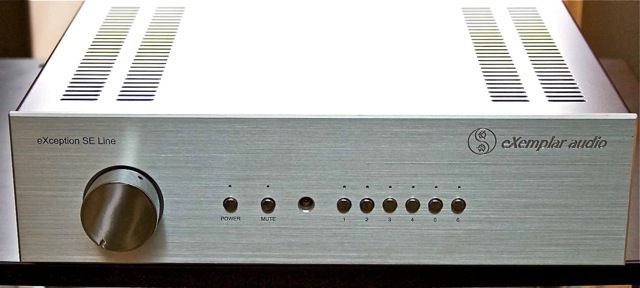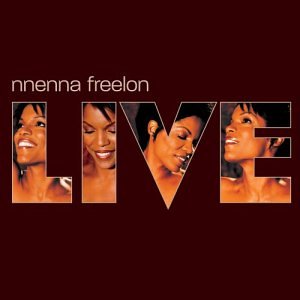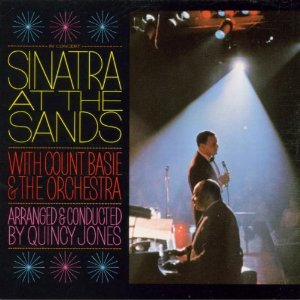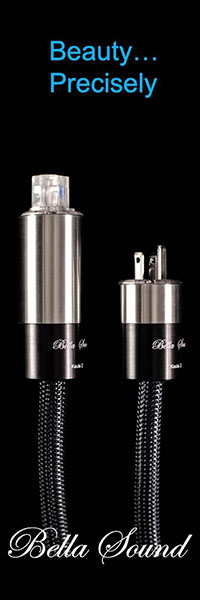Exemplar Exception preamp

Is the Exemplar Exception Preamp Exceptional? Waiting for component to break-in is the bane of audio reviewers. You can hear improvements over time, and you don’t ever really know when this will stop. This was especially the case with the Exemplar Exception preamp, in large part, I suspect, because of the Urushi capacitors, used as dc blocking capacitors, take a long time to reach their best. My review unit had only four hours on it when shipped. Each of the first three nights, I left it with music playing but the amps off. And in the evening of each of those days I listened. Not a word of this review nor the notes on which it is based, was written for another two weeks. After about two and a half weeks, I thought I heard little further improvement, until one night nearly a month, after first using the Exception, I heard a substantial jump in the sense of depth and detail in the sound stage. In reality I suspect hundreds of hours are needed before you hear the Exemplar Exception at its best. I also suspect that any component using the outstanding sounding Urushi capacitors will take this lengthy break-in.
Waiting for component to break-in is the bane of audio reviewers. You can hear improvements over time, and you don’t ever really know when this will stop. This was especially the case with the Exemplar Exception preamp, in large part, I suspect, because of the Urushi capacitors, used as dc blocking capacitors, take a long time to reach their best. My review unit had only four hours on it when shipped. Each of the first three nights, I left it with music playing but the amps off. And in the evening of each of those days I listened. Not a word of this review nor the notes on which it is based, was written for another two weeks. After about two and a half weeks, I thought I heard little further improvement, until one night nearly a month, after first using the Exception, I heard a substantial jump in the sense of depth and detail in the sound stage. In reality I suspect hundreds of hours are needed before you hear the Exemplar Exception at its best. I also suspect that any component using the outstanding sounding Urushi capacitors will take this lengthy break-in.
So what is the Exemplar Exception preamp? It is a single piece unit with six unbalanced inputs (one of which may be changed to a home theater bypass). It comes with a very nice remote control, one that is used by its Exemplar big brother, the XP-2, and the SMc VRE-1 C. It is a single-ended tube unit, using 6922 type tubes, new high performance shunt regulators for extremely low impedance, low noise and wide bandwidth filtering of power to their class A, and all triode signal stages. It uses a two-stage signal path consisting of a voltage amp directly coupled to an actively loaded cathode follower output stage, and of course the Urushi caps.
This is part of the new Exception line coming from Exemplar Audio, which will include the preamp, an integrated amp, a dac, and a phono stage. John Tucker is the principle man there. I first met John when he was involved with the Shuttle Program. His primary activity was in running the Shuttle simulator. He later left NASA and moved to Everett, Washington and ultimately established Exemplar Audio. About three years ago I heard a prototype of his top-of-the-line XP-2 balance preamp, which, in a more current version, is now my reference unit. Presently I also have the prototype of the dac that will be part of the new, less expensive line. A review of it will be done once a production version is available.
John is also behind the “signature” and “statement” versions of LSA speakers and amplifiers. When LSA bought out DK Designs, LSA asked him to update these units, which he did with great success. I now have his modified LSA1 Statement speakers and his LSA Statement Plus integrated amplifier.
Setup
The only real change in my system is that my Music Server from Empirical Audio Legacy failed just over a month ago. The new Mac Mini portion of this server had to go through break-in. Since the comparison here will be between my reference Exemplar XP-2 and the Exemplar Exception, I should note that the High Fidelity Cables have displaced my use of balanced cabling. This means that only single-ended RCA cabling is used. On the single ended Exception this is obvious.
Listening Sessions

I have repeatedly switched back and forth between the Exception and it XP-2 preamps. Knowing that the High Fidelity Ultimate cables hate to be moved, I have always sought to move the source to preamp cable and the preamp to amps cables as little as possible. Since I had just listened to Nnenna Freelon live at The Home Entertainment Show in Newport, I sought her live recording, Nnenna Freelon, Live (Concord Records B0000C9JDC), and in particular the “All or Nothing at All” cut, which she performed at THE Show, was important. Both of her performances were nearly identical. The realism of the recording is just striking. Of course, both involved amplified sound with one being in a large theater and the other outdoors. In all probability the miking in the recording is better, but her charm and involvement with the audience live was better.
In this instance, I would say that the XP-2 had more depth and the Exception had better leading edge or startling ability as well as more information. Much of this information wasn’t musical but rather breath and movement sounds. The window to the sound was just cleaner. These attributes were to be found across the range of music used. Paul Simon, “The Sound of Silence,” on Songwriter (Sony Legacy B005KLNOLA), which I think is the best recording on this disc that Simon picked himself, is again strikingly real and involving. I wasn’t at this recording, but I doubt if anyone there heard it as real as I did. I had a greater feeling of the open live recording event with the XP 2, but the Exception was thrillingly alive and quick. On this recording I was aware of much more resolution on the Exception.
 Frankly, (no pun intended) many of Frank Sinatra’s early recordings, although probably state-of-the-art at the time, nevertheless lack realism. But I have found Frank Sinatra and Count Basie Sinatra at the Sands (Mobile Fidelity MFSL 2-332) can give great realism of being there with an exceptional recording engineer. I use two cuts off this recording, “One for my Baby” and “I’ve Got a Crush On You.” I have looked for a picture of how Frank, Basie, the audience and the band were positioned but have found nothing. But on the first cut, they both give a feeling for where the largely quiet band is and well as placing the audience being mainly on the left. But the Exception gives many more details that add realism, such as Frank inhales and fumbling with the mike. The second cut gives all of this and even better sense of where everybody in located.
Frankly, (no pun intended) many of Frank Sinatra’s early recordings, although probably state-of-the-art at the time, nevertheless lack realism. But I have found Frank Sinatra and Count Basie Sinatra at the Sands (Mobile Fidelity MFSL 2-332) can give great realism of being there with an exceptional recording engineer. I use two cuts off this recording, “One for my Baby” and “I’ve Got a Crush On You.” I have looked for a picture of how Frank, Basie, the audience and the band were positioned but have found nothing. But on the first cut, they both give a feeling for where the largely quiet band is and well as placing the audience being mainly on the left. But the Exception gives many more details that add realism, such as Frank inhales and fumbling with the mike. The second cut gives all of this and even better sense of where everybody in located.
Holly Cole’s live performance in It Happened One Night Metro Blue (CDP 7243 852699 0 5) gives two very useful cuts, “Get Out of Town” and “Cry (if You Want to).” The first affords a sense of her presence on the stage and the audience in front of her. The Exception gives a much more open sound with a sense of the decay of sound. The “Cry” cut as exceptional drum passages, which are nicely defined and deep.
Conclusion
While I still greatly enjoy my Exemplar XP-2 line stage, especially with it balanced cable capability and its left/right balance capability, there is no question that the Exception is not only a much better buy and in many ways the best sounding preamp I have heard. I must say, however, that the sound stage image is more holographic with the XP-2, although you would have to hear them side-by-side to notice it. There are two tweaks that I have found to yield great improvements in Exception’s sound. One is adding a Synergistic Research Quantum fuse (1-amp 20mm fast blow). The other was putting a WA Quantum fuse Chip to that fuse.
I can only hope that Exemplar dealers have well broken in Exception preamps available for your listening, that their rooms are good, isolation exemplary, and have a quality fuse in their Exception.


Specifications: Exemplar Audio Exception Line Stage–$4250
Controls: Volume, Power, Mute, Input selector
Outputs: RCA X 2
Inputs: RCA x 5
Input Impedance: 50k ohms
Output Impedance: 133 ohms
Frequency Response: 10Hz-50kHz
S/N: >90db
Address:
2909 95th Drive SE
Lake Stevens, WA 98258
Website: http://www.exemplaraudio.com/Home.html
Email: jtucker@exemplaraudio.com
Phone: 425-334-4733
Stereo Times Masthead
Publisher/Founder
Clement Perry
Editor
Dave Thomas
Senior Editors
Frank Alles, Mike Girardi, Russell Lichter, Terry London, Moreno Mitchell, Paul Szabady, Bill Wells, Mike Wright, and Stephen Yan,
Current Contributors
David Abramson, Tim Barrall, Dave Allison, Ron Cook, Lewis Dardick, John Hoffman, Dan Secula, Don Shaulis, Greg Simmons, Eric Teh, Greg Voth, Richard Willie, Ed Van Winkle, Rob Dockery, Richard Doron, and Daveed Turek
Site Management Clement Perry
Ad Designer: Martin Perry





Be the first to comment on: Exemplar Exception preamp